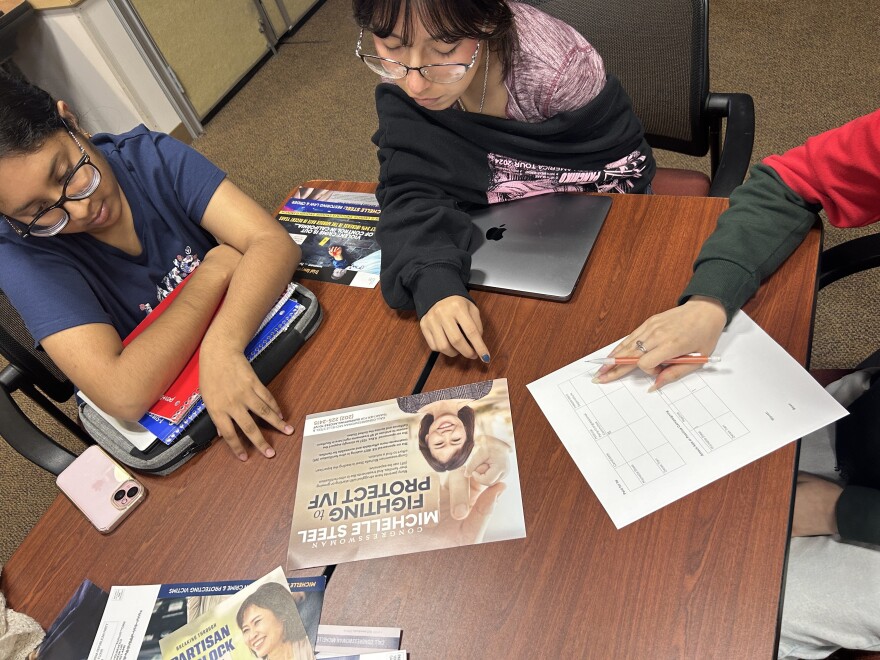Truth matters. Community matters. Your support makes both possible. LAist is one of the few places where news remains independent and free from political and corporate influence. Stand up for truth and for LAist. Make your year-end tax-deductible gift now.
How to decode those political mailers clogging up your mailbox

A political science class at Fullerton College is sorting through campaign mailers to learn how to decode attack ads and who pays for them, and to understand how candidates try to sway voters. There are some lessons for the rest of us, too.
The assignment
In Jodi Balma's political science class recently, students broke into groups with piles of mailers sent out in the 45th Congressional district, where incumbent Republican Michelle Steel is facing off against Democrat Derek Tran. Students tallied up the negative and positive ads, analyzed the colors and messaging, and noted who paid for them.
What's the point?
Balma said learning how to "diagnose" campaign ads is a skill students can take throughout their voting life.
"When you actually critically look at it in a classroom, you get a very different perspective than when it's in your mailbox," Balma said. "And so teaching that skill stays with the students forever."
A few tips about campaign mailers:
- Generally, political ads have to disclose who paid for them. California's Fair Political Practices Committee (FPPC) has a handy fact sheet that lays out the basic rules.
- If you think an ad violates the rules, you can upload a photo of it or send a link to the FPPC's enforcement division and they'll review it.
- Voting early can help slow the flood of campaign ads to your mailbox. Sophisticated campaigns tailor their mailers to people they think they can sway.
Still working your way through the ballot? Head over to LAist.com/Vote for a guide to help you fill out your ballot.
We don't do endorsements. But we do help you break down the races, measures and issues that impact you most of all.
-
Government sources say that for the last six weeks, they’ve been ordered not to release undocumented children in federal custody to their parents and relatives.
-
Apartment hunters with rental assistance were not welcome at many Jamison buildings, in apparent violation of California law, a Capital & Main investigation found.
-
The Cedars-Sinai doctor who delivered the baby successfully said the odds of this outcome were “far less than one in a million.”
-
Education researchers say happier teachers are more likely to stay and that stability can be good for long-term learning outcomes.
-
A Rolex found amid the rubble of the Palisades Fire tests the skill of a popular YouTuber dedicated to watch restoration.
-
Fans have until Jan. 13 to enter the draw for a chance to buy tickets. Results will be announced in February.
















